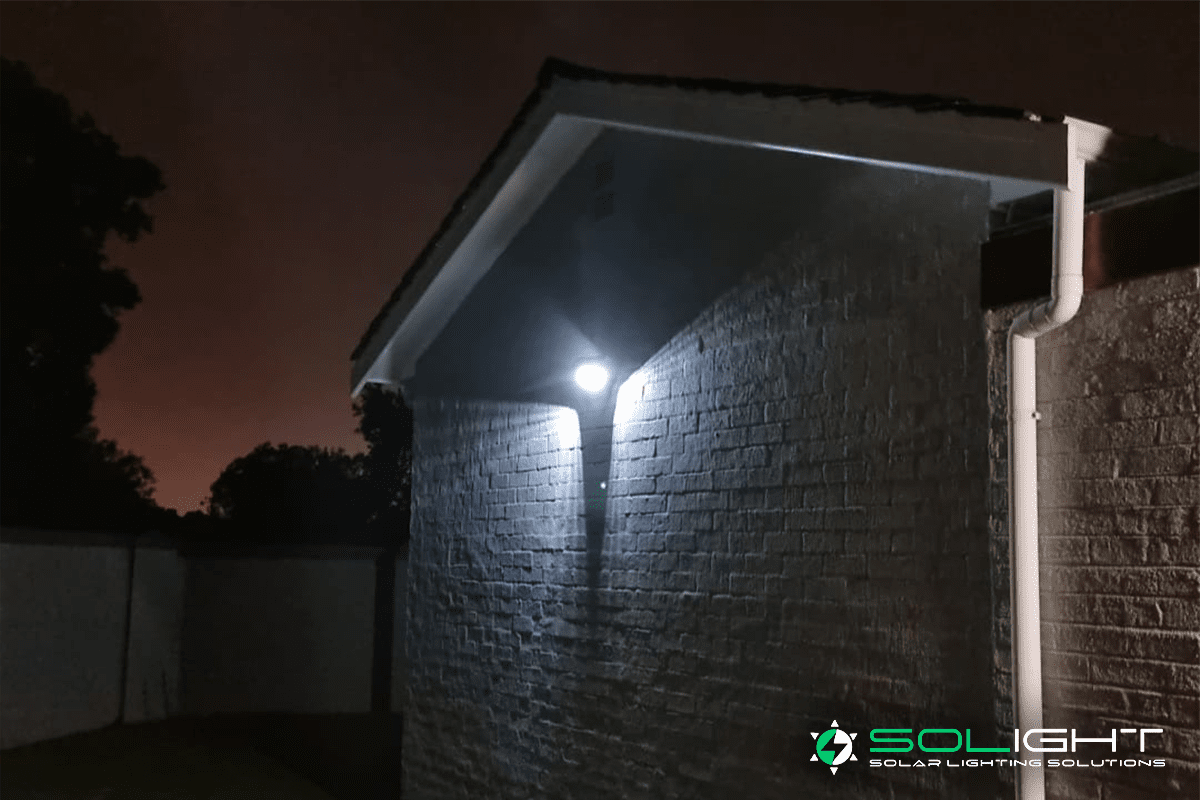Here at SoLight, we’re proud of the quality of our range of residential and commercial LED lighting solutions – but we appreciate that there is a lot of technical terminology behind the illuminations.
Let us explain some of the phrases and features that make your LED lights so high performance and translate the industry jargon so you can make informed buying decisions.
If you ever need support understanding which LED lighting systems are right for you, our experienced solar power specialists are always on hand to help – just get in touch.
The LED Lighting Dictionary
Before we get stuck in, it’s worth clarifying what we mean when we talk about LED lighting and what makes it so economical and eco-friendly compared to conventional wired lights.
LED is an abbreviation for light-emitting diode, which signifies that the bulb converts energy (in this case from the sun) into clear, bright lighting. We love LEDs because they are up to 90% more efficient than a standard bulb and use a tiny microchip to divert the energy to light the small diodes, producing a better spread of light with greater clarity than conventional technology.
All solar lighting models we stock at SoLight are solar-powered, so they cost nothing to run, require zero mains power, have no wires or cables, and last for years at a time – while being kind to Mother Earth.
Now that’s clear; we’ll run through some phrases you’ll find on our site.
What is a Lumen in LED Lighting?
A lumen is a measurement used to evaluate the brightness of a bulb.
That matters because, for example, our Solar Wall Light MARS 5 emits 200 lumens when on constantly, or 1,000 lumens when operated on the PIR. The PIR is a passive infrared sensor, so your security lights only come on when activated by movement.
This lighting level is appropriate for an elegant feature light or a wall-mounted security light perhaps installed in your driveway or above entrance ways.
In comparison, if you need an LED solar light for estate or street lighting, we might recommend the Solar Street Light Camps Bay, which produces 400 lumens for five full hours when on constantly, or 3,000 lumens when left to operate against the motion sensor.
What Does an IP65 Waterproof Rating Mean?
Our lighting models include information in the product details indicating waterproof ratings – crucial to a lighting system you install outdoors!
IP (Ingress Protection Rating) is an independent testing system used to specify the ability of a product to resist water, dust and dirt. At IP65 standards, a lighting unit can withstand sustained jets of water for over 15 minutes, stress-tested to 12.5 litres per minute and at a specific pressure from three metres away.
Without accreditation, there is no guarantee that an outdoor light will be engineered to cope with the elements, so there is a significant risk that the light will stop operating at the first sign of heavy rain.
The rating included in your solar lights is an assurance that they are sturdy and resistant to water and particles.
What LED Power Should I Look For in an Outdoor Solar Light?
The power of an LED light is measured in watts, shortened to W. One watt is equal to one joule a second, which tells us how much power the bulb extracts from the electrical circuit when in use.
Solar lights designed to create ambience and attractive lighting for gardens will be much lower power since they produce softer illuminations that are comfortable on the eye. A high-powered security light will correspondingly have a much greater wattage, delivering a burst of lighting to flood the area where movement is detected.
It may be useful to understand the ratio to determine the suitable wattage of an LED bulb when replacing an old incandescent bulb. If you have a 60-watt bulb and want to upgrade to an LED model, the ratio is either 5:1 or 6:1. In effect, a 12-watt LED bulb will be a good replacement for a 60-watt incandescent bulb.
LED bulbs require far less energy, so a bright LED flood lamp can operate efficiently at a much lower power rating, so you get the same lighting, with much less power, making your LED lights all that more efficient.
How Battery Cycles Impact the Longevity of Solar Garden Lights
One battery cycle lasts about three days. The more battery cycles in your LED lights, the longer they’ll last – so if we look at the Atlas Solar Street Light, the Lithium-ion battery has a capacity of 1,500+ cycles.
In short, this solar lighting system will operate for at least 4,500 days – or over 12 years.
That impressive durability explains why we believe LED solar lights to be substantially more cost-effective than wired lights – over that 12 years; the IP65-rated weatherproof casing will keep your lights working perfectly, without any electricity usage whatsoever.
We’ve explained more about battery cycles and how they indicate the expected durability of your LED solar lights in our earlier article, looking at How Long Do Solar Garden Lights Last.
What Are Colour Temperatures in LED Security Lights?
The colour temperature is a way of quantifying the colour of the light. White light is measured in Kelvins, so the Halo Solar Landscape Light has an LED power of 20W with a 4,000K temperature.
In essence, the colour of light varies from a warm, yellow hue at around 3,000K but becomes tinted with blue and cooler in tone at approximately 6,500K.
Homeowners tend to opt for a gentler, warmer light for entertaining areas and patio lighting, but a cooler and starker colour temperature for security systems.
We hope this article helps explain some of the definitions and terms we use in LED solar lighting and steers you through our extensive range of high-quality garden lights to choose the optimal products for your property. As always, please get in touch with SoLight at your convenience if you need any assistance.





